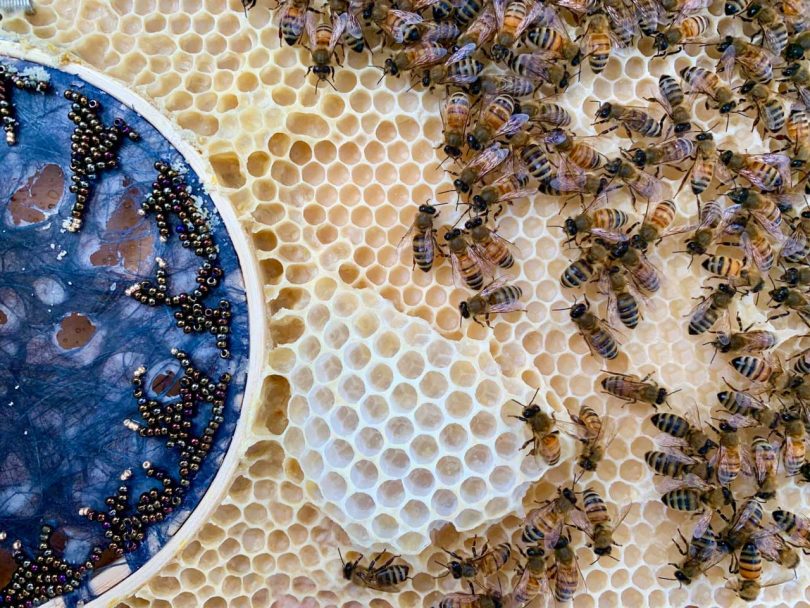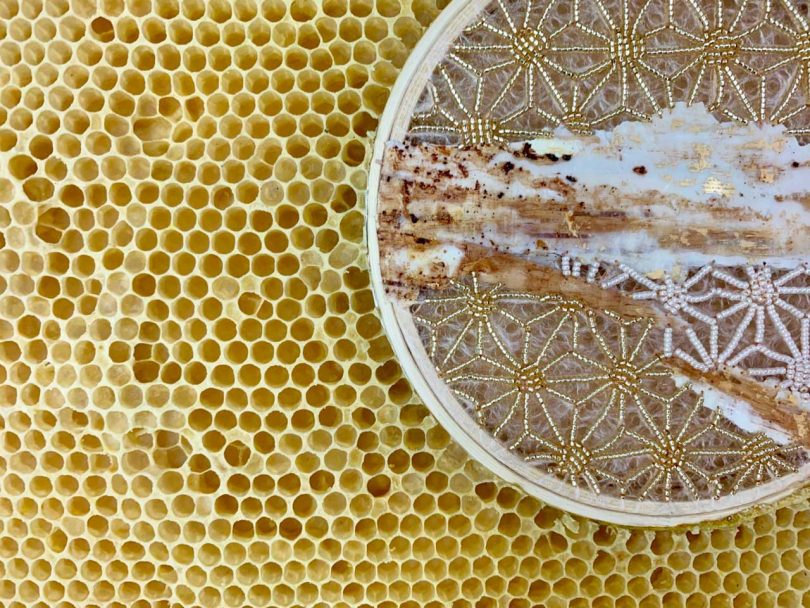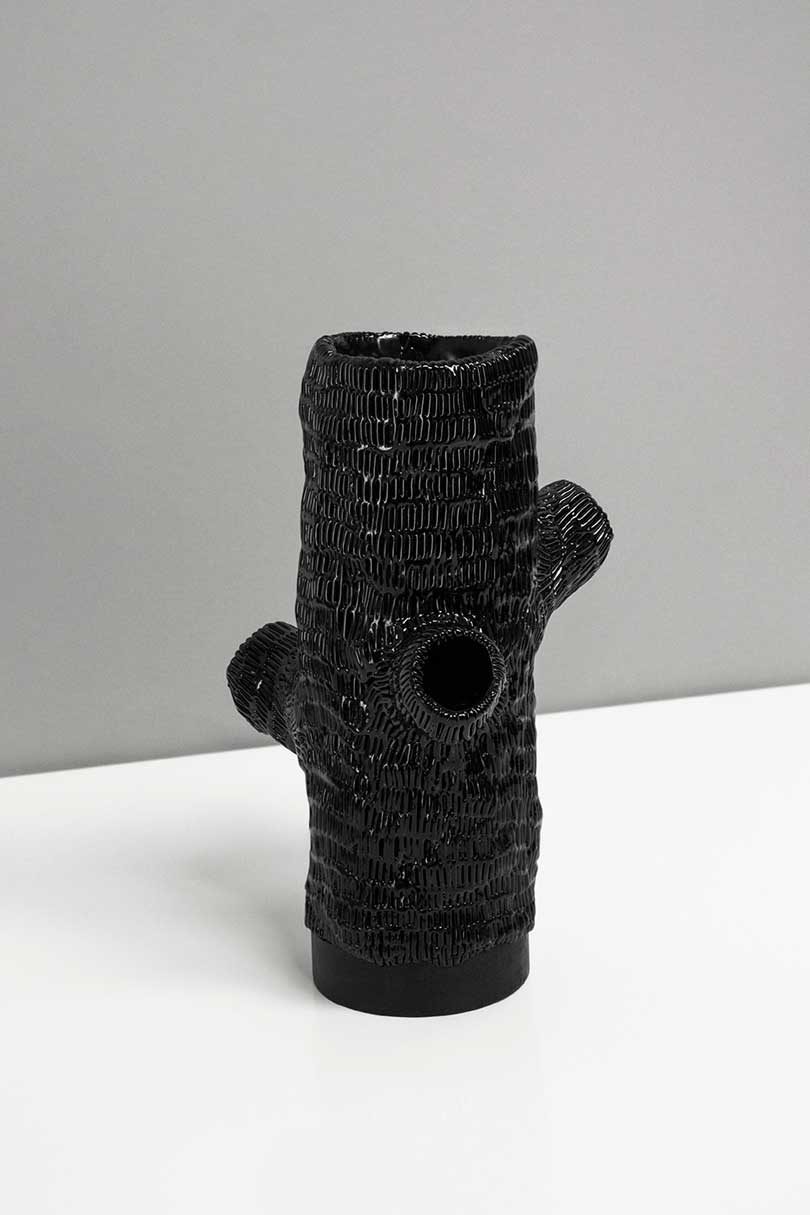This month we are exploring artwork created by unforeseen partnerships. Chef Bob and I have built a company around our collaboration and passion for food and design. And thus we are intrigued with those who similarly find merit in making remarkable work by combining forces.
Artist Ava Roth is taking collaboration to a new level. Instead of your typical human studio mate, Ava pairs with her backyard honeybees to create mixed media collages combining embroidery, beadwork, fabric, tree bark, and honeycomb. The Toronto-based artist builds artworks inside the comb frames, and the bees complete the pieces by encasing them in organic honeycomb patterns.
The artist explains “My intention is to celebrate the extraordinary work of the honeybee and match it with sewings that invoke their delicate and ephemeral comb. By placing the embroideries in hoops, I am also giving a nod to a tradition of women’s work. Since the working bees are all female – and not making ‘fine art’, the finished pieces are very much in the tradition of marginalized women’s work, and sewing in particular. Because both the bees work and traditional women’s work have been largely functional, their beauty and significance have been easily overlooked.”
Marlene Huissoud, a French experimental designer based in London, is also convinced that we have a lot to learn from bees.
Hailing from a family of beekeepers, she found a new use for propolis, a biodegradable resin that honeybees collect from different trees and use as a sealant in the hive. Her brilliant appropriation of this natural byproduct, that would otherwise be discarded, in turn is a development of a new material in collaboration with insects. This bee-resin is more precious than crystal or cocoons of silkworms, and is as resistant as leather!
“Once a year the beekeeper has to remove a bit of the propolis in order to extract the honey from the frames of the beehive,” said Huissoud. “We are talking about small quantities, which are less than 100 grams per hive per year. It is thus a really precious and unique material.”
The color of propolis depends on its botanical source and Huissoud chose to use a black variant that comes from rubber trees. As the material has similar properties to glass, she worked with craftsmen to experiment with traditional blowing and engraving techniques. And thus her FROM INSECTS collection was born.
from WordPress https://connorrenwickblog.wordpress.com/2019/10/29/bee-dazzled-artworks-ava-roth-marlene-huissoud/









No comments:
Post a Comment